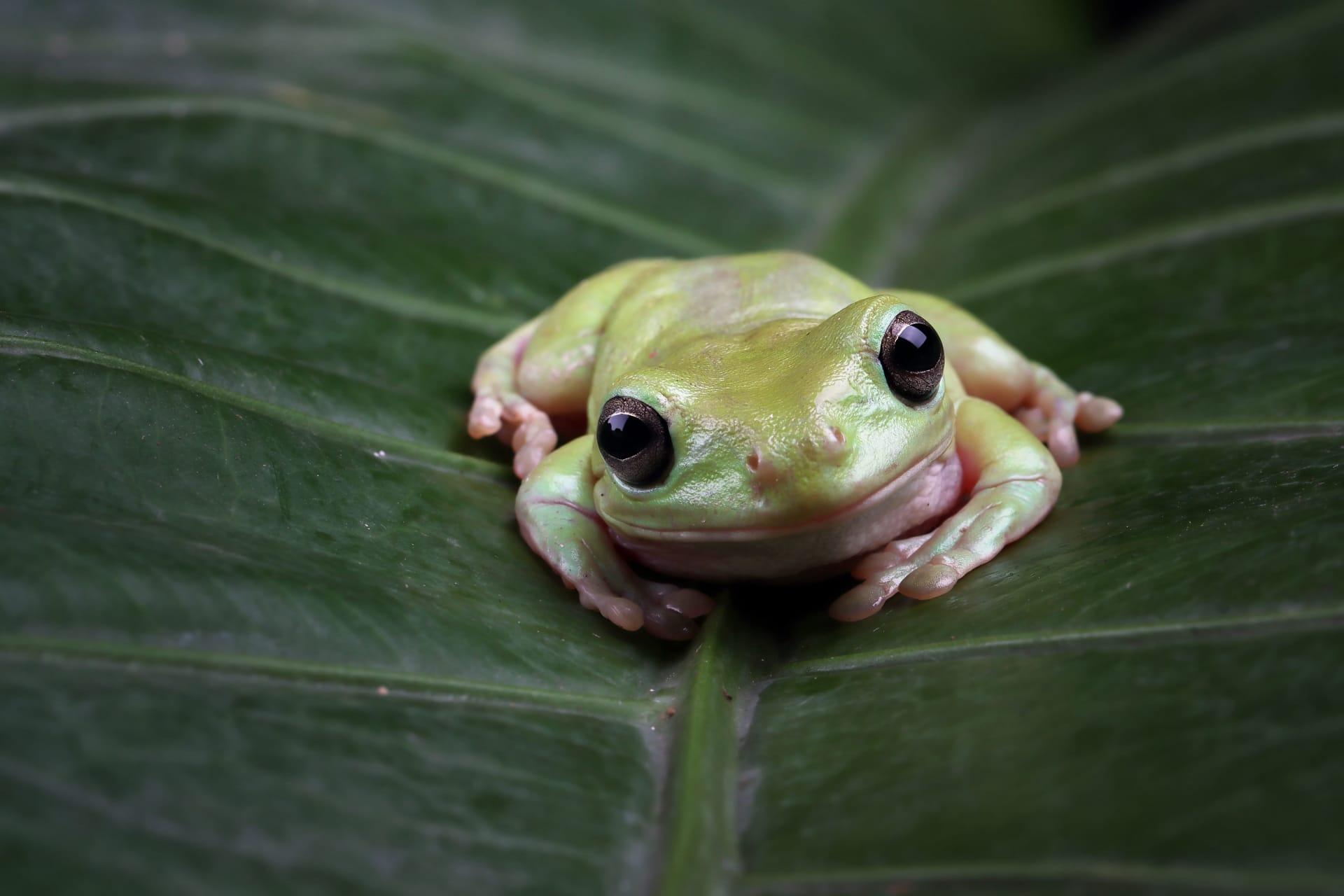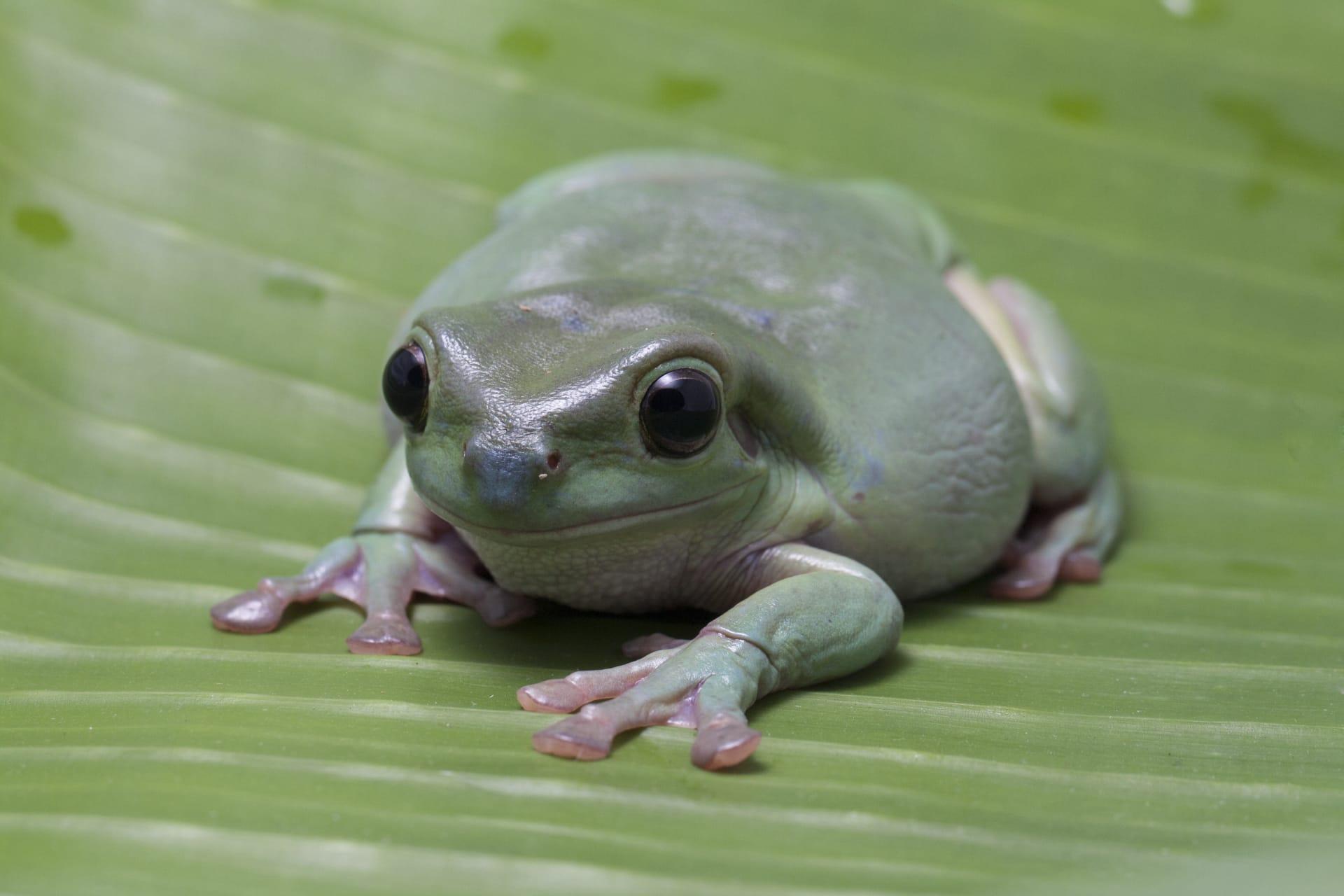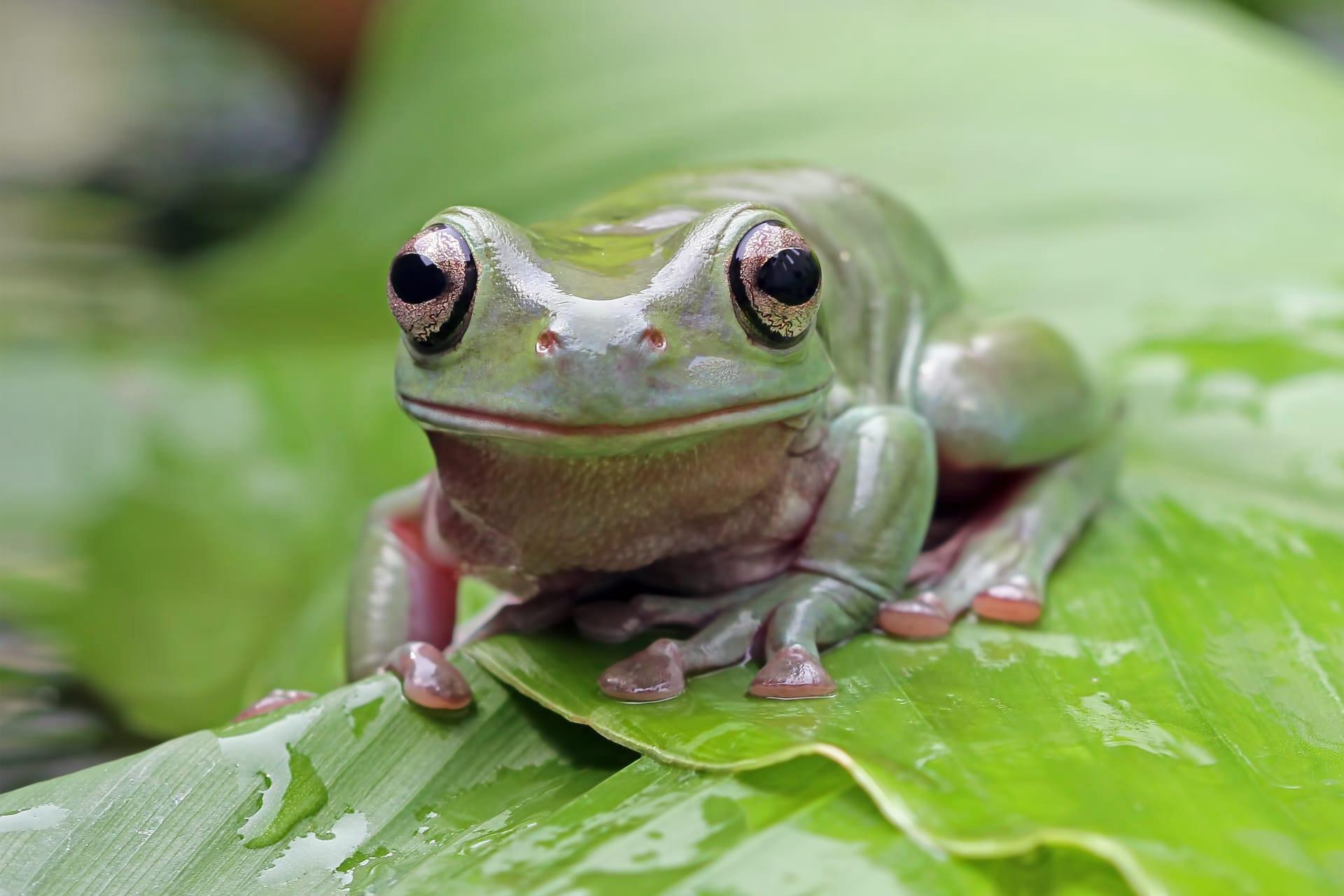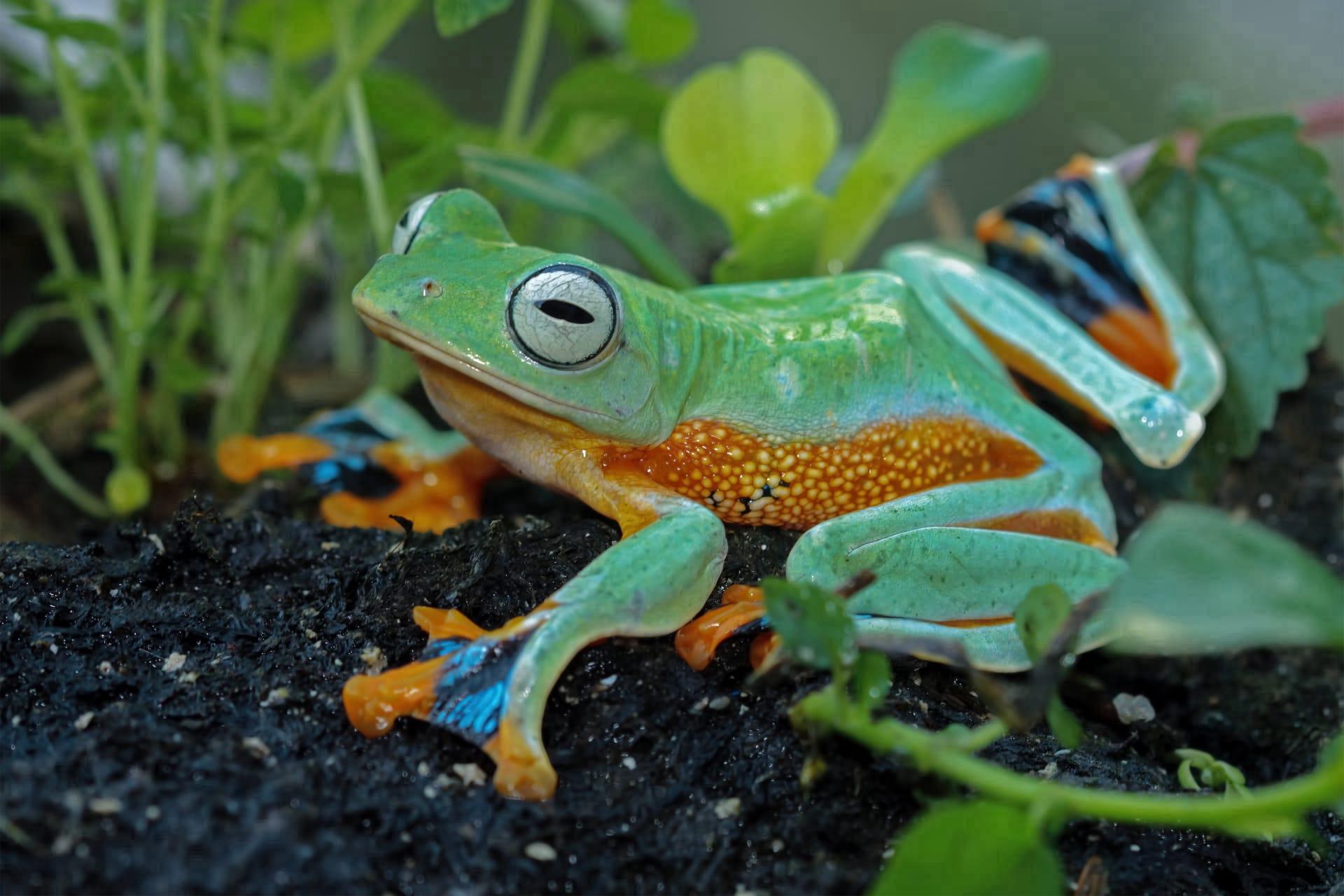1
Tree frogs are remarkable for their vibrant colors, which aren't just for show. These colors can be a form of communication, warning predators of their toxicity. For example, the red-eyed tree frog, found in Central America, has bright green skin, blue and yellow striped sides, and vibrant red eyes. When resting, it conceals these colors, but when threatened, it reveals its eyes and flashes its legs to startle predators, giving it a chance to escape.
Another fascinating aspect is their unique adaptation for climbing. Tree frogs have specialized toe pads that work like suction cups, allowing them to cling to smooth surfaces. These toe pads are made up of a series of closely packed, flat-topped, hexagonal cells with a small gap between each cell. The pads secrete a mucous, which helps them stick to surfaces by creating surface tension and capillary action. This adaptation enables them to climb trees, plants, and even glass windows with ease.

2
Tree frogs have a unique way of caring for their eggs. Unlike many other amphibians, some tree frog species, like the red-eyed tree frog, lay their eggs on the underside of leaves that hang over water. When the eggs hatch, the tadpoles fall directly into the water below where they continue to develop. This strategy protects the eggs from aquatic predators and keeps them moist.
Tree frogs are also known for their diverse and melodious calls, used primarily during the mating season. Each species has a distinct call, which the males use to attract females. The calls are produced by air sacs near their throats, which act as amplifiers. Some tree frogs can be heard up to a mile away. The frequency and intensity of these calls vary depending on the species, environmental factors, and the frog's size.

3
The diet of tree frogs varies significantly among different species, but most are insectivorous, feeding on a diet of flies, ants, mosquitoes, and other small insects. Some larger species can even feed on larger prey like spiders and small vertebrates. Their hunting strategy involves waiting silently for prey to come within range and then swiftly capturing it with their long, sticky tongue.
Tree frogs have a remarkable ability to survive in various climates. Some species, like those found in temperate regions, can hibernate during colder months. They do this by burrowing into the ground, hiding under leaf litter, or finding crevices in which to shelter. During hibernation, their metabolism slows down significantly, allowing them to survive on their stored energy reserves until the weather warms up again.

4
Some species of tree frogs have developed an extraordinary resistance to freezing. For instance, the North American wood frog can survive being frozen solid during winter. Its blood contains special ice-nucleating proteins that control ice formation in its body, preventing cell damage. This adaptation allows the frog to freeze during the winter and then thaw and resume normal functions with the arrival of spring.
Tree frogs play a crucial role in their ecosystems as both predators and prey. As predators, they help control insect populations, which can be beneficial for reducing disease transmission and aiding in pest control for agriculture. As prey, they are a food source for a variety of animals, including birds, snakes, and larger amphibians. This makes them an integral part of the food chain in their habitats.

5
Tree frogs exhibit a wide range of reproductive strategies. Some species, like the glass frogs of Central and South America, have transparent skin on their bellies, allowing a view of their internal organs. During breeding, the male glass frog guards the eggs, which are laid on leaves, until they hatch. The transparency of the eggs allows the developing tadpoles to be seen, offering a unique glimpse into the early stages of amphibian life.
The size of tree frogs varies greatly among species. The smallest known species is the Paedophryne amauensis from Papua New Guinea, measuring just 7.7 millimeters in length. On the other hand, the largest species, like the White-lipped tree frog found in Australia and New Guinea, can grow up to 5.5 inches long. This wide size range highlights the incredible diversity found within the tree frog family, adapting to different environments and ecological niches.